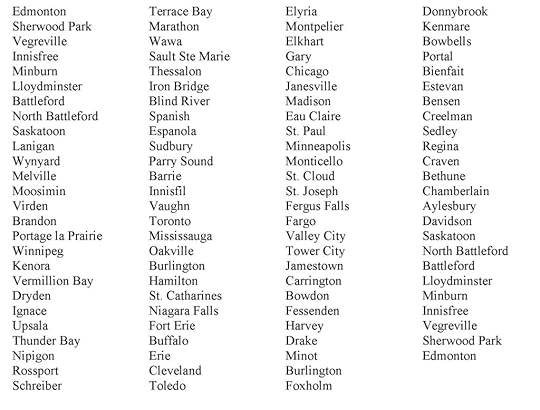Marilyn Hamilton's Blog, page 44
September 17, 2017
Beyond Sustainable Development to Living Fully Alive
As a radical optimist called to consider the purpose and value of the city, I have usually found the whole approach to sustainable development somewhat limiting (see previous article).
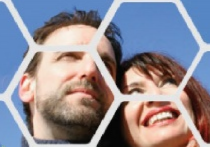
The assumption which most inspires me about the city is one I learned from James Lovelock, author of the Gaia hypothesis. Despite all the shortcomings that plague humanity and which we in turn visit upon our mother planet, Gaia, Lovelock suggests we are evolving as Gaia’s Reflective Organ.
I build upon that thesis and contend that in fact it is our cities that have the potential to become Gaia’s Reflective Organ. As individuals we are the cells of the organ. Our organizations act like organelles in that organ.
As I am currently writing Book 3 in the Integral City series I have been contemplating how GRO is linked to living systems. I always go back to the definition of a living system that Capra (a physicist) offered to provide a foundation for thinking about this. A living systems must demonstrates three basic capacities – to survive, connect with its environment and regenerate.
Evolution biologist, Elisabet Sahtouris has been most helpful in unpacking those three processes into 15 Principles of Living Systems.
Sahtouris Principles show how our living system is perpetually self-organizing as it cycles through the 3 basic processes. And those Principles practised often enough, in turn become habits. At the scale of the city, those habits become Integral City’s 12 Intelligences (outlined in Book 1). They in turn translate into the succinct Integral City Master Code – outlined in the quotation above.
Thus, the opportunity of living to our full potential as humans who can evolve for Gaia not just one but many Reflective Organs, demands that we keep evolving our experience of aliveness in the context of our human hive habitats.
Architect, Christopher Alexander proposed that we are all able to sense when something is more alive in comparison to something else. His deep appreciation of aliveness applied to creating the artefacts (especially architecture in cities) that beautify our lives through embracing the following qualities:
ALEXANDER’S QUALITIES OF ALIVENESS
Levels of scale
Strong centers
Boundaries
Alternating repetition
Positive space
Good shape
Local symmetries
Deep interlock and ambiguity
Contrast
Gradients
Roughness
Echoes
The void
Simplicity and inner calm
(Integral Theory focusing on the Big 3 would further suggest that if our acts of creativity bring aliveness and Beauty into our habitats, then the corollary qualities of Goodness and Truth will emerge as well.)
One of the frames for considering how we emerge aliveness expressed as Beauty, Goodness and Truth, came from Clare Graves and the Beck/Cowan Spiral Dynamics integral model. SDi shows that the values of aliveness are progressively transcended and included as we mature through levels of complex development. We can see that aliveness embraces the progression of:
Surviving
Belonging
Expressing
Respecting
Generating
Accepting
Flowing
“Planeting”
Through these stages (so far realized in our evolutionary history to some degree) we can see aliveness developing and evolving.
These days we measure the livability, or the quality of life, or the sustainability index of our cities. But perhaps we are setting our measures for vitality too low?
Could it be that the success of the designs of our habitats should be tracked against a measure of how much they enable us to feel FULLY ALIVE? Is that the criteria that will give us the momentum to become Gaia’s Reflective Organs (and Organ system)?
If that were the case then we might adapt Integral City’s 5 maps to track the dynamics of aliveness. A new visit to the 2013 blogs (see links to 5 Maps below) that explored those 5 maps reveals a wealth of indicators (derived from the living systems qualities of Pattern Dynamics) for tracking the evolution of the reflective capacity in Gaia’s Reflective Organs. As such they offer measures of inner depth and verticality that seem to be missing in the SDG’s. And I don’t think we will accomplish the SDG’s without them.
Integral City’s 5 Maps
Map 1: The Four Quadrant Eight Level Map of Reality – this relates to PD Polarity Patterns
Map 2: The Nested Holarchy of City Systems – this relates to PD Creativity Patterns
Map 3: The Scalar Fractal Relationship of Micro-Meso-Macro Human Systems – this relates to PD Exchange Patterns
Map 4: The Complex Adaptive Structures of Change – this relates to PD Structure Patterns
Map 5: Spirituality in the Human Hive – this relates to PD Source Patterns
Placecaring and Placemaking for Sustainable Development Goals
The Sustainable Development Solutions Network (SDSN) has just released its first report on US Cities Sustainable Development Goals Index 2017. The report ranks US cities against the 17 Sustainable Development Goals to be attained by 2030 as adopted by the UN in 2015.
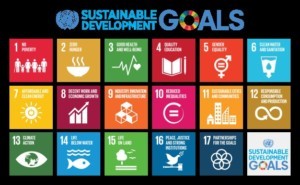
SDG Goal 11 was to create resilient, inclusive and sustainable cities and the SDSN has designed a report rating US cities to encourage them to organize themselves around the 17 Goals as a framework for strategic sustainable change.
The report has an impressive traffic light dashboard reporting on all 17 goals for 100 US Cities (Metro Statistical Areas).
 Criticism of SDG’s
Criticism of SDG’sMuch criticism of the 17 SDG Goals has ensued since publication (not the least of which has resulted in the US 2017 withdrawal from the Paris Climate Accord which was derived from the SDG’s – and which might explain why Goal 13 – Climate Action shows up as universally red/requiring action in all 100 US cities).
Wikipedia reports both negative and the positive critques of the SDG’s.
Negative: The SDGs have … inherent shortcomings in the very concept of sustainable development and the inability of … to either stabilize rising carbon dioxide concentration or ensure environmental harmony.
Positive : The SDGs were the first outcome from a UN conference that was not criticized by any major Non-Governmental Organization (NGO). …. The MDGs dealt with the problems, the SDGs deal with the causes of the problems. … Finally, the MDGs used a silo approach to problems, while the SDGs take into account the inter-linkages.
Nearly all stakeholders engaged in negotiations to develop the SDGs agreed that 17 goals were justified because the agenda they address is all encompassing.
Evolutionary World Threat Analysis
Because Integral City has analysed the predecessor set of Millennium Development Goals (MDG’s) against our proposition that sustainability must be viewed from a developmental lens, we were curious how the 17 SDG’s would measure up against the same filter.
To provide the background for our observations (which are being incorporated into Chapter 15 of our Book 3 in the Integral City series) we introduce our graphic analysis of World Threats in terms of the 6 evolutionary levels contained in the Anthroposphere and Biosphere (based on Dr. Brian Eddy’s Integral Geographic analysis of world evolution).
Our evolutionary analysis reveals that the SDG’s certainly emphasized goals related to the Anthroposphere or psycho-cultural-social domains – where 12/17 of the goals reside. And we are encouraged to see that the other 5 geological plates have SDG’s assigned to them (some of which overlap more than one level) as set out below.
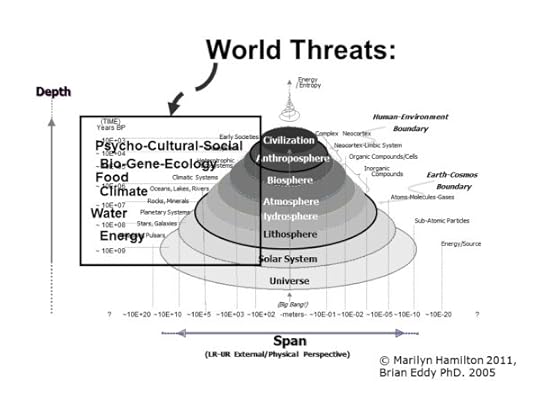
The SDG’s map out against the World Threat Analysis as summarized here – (with the references in the Anthropospere section to the quadrants of the Integral City Map 1).
SDG Evolutionary Threat Analysis
Psycho-Cultural-Social – Anthroposphere
UL Goal 4: Quality Education
LL Goal 16: Peace, Justice and Strong Institutions
LL, LR Goal 17: Partnerships for the Goals
LL Goal 16: Peace, Justice and Strong Institutions
LL, LR Goal 17: Partnerships for the Goals
UR Goal 5: Gender Equality
UR, LR Goal 12: Responsible Consumption and Production
LR Goal 1: No Poverty
LR Goal 8: Decent Work and Economic Growth
LR Goal 9: Industry, Innovation and Infrastructure
LR Goal 10: Reduced Inequalities (work, pay)
LR Goal 11: Sustainable Cities and Communities
Bio-Genetic-Ecological – Biosphere
Goal 3: Good Health and Well-being
Goal 12: Responsible Consumption and Production
Goal 14: Life Below Water
Goal 15: Life on Land
Food Scarcity – Biosphere
Goal 2: Zero Hunger
Goal 12: Responsible Consumption and Production
Climate – Atmosphere
Goal 13: Climate Action
Water – Hydrosphere
Goal 6: Clean Water and Sanitation
Goal 14: Life Below Water
Energy – Lithosphere
Goal 7: Affordable and Clean Energy
Goal 15: Life on Land
Beyond this initial analysis, it is fascinating to see who were the Top 10 US Cities and Bottom 10 Cities in the US (as shown in the following tables).
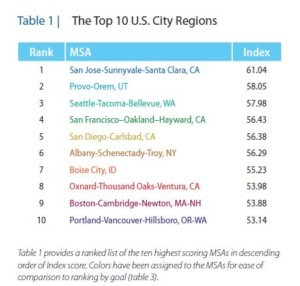

How do Worldviews Translate Placecaring & Placemaking into SDG’s?
The question we are most curious about, is how the cities and their indices are linked to the worldviews of the 4 Voices of each city – the Civic Managers, Citizens, Business and Civil Society – who call one of those 100 cities “my place”. How will their worldviews impact the use they make of resources, setting intentions and making decisions for sustainably developing their cities?
That is where the consciousness and culture of the cities will translate the SDG framework into a city where placecaring and placemaking can result in truly sustainable development. And that is why such a framework as the SDG’s must be understood not only in the evolutionary terms of a World Threat Analysis – but applied in developmental human terms. For without understanding the natural sequencing of human development, we are highly unlikely to achieve the targets set for 2030. (This will apply to both the USA and all the rest of the world’s cities using these indices.)
The bottom line from an Integral City perspective is that SDG’s can only be achieved if the 4 Voices of the city work together through inquiry and action to design sustainable impact. That will require the tough love of placecaring and the natural designs of placemaking. (See Book 2).
September 13, 2017
From Home Base to New Place and Back Again
Guest Blogger: Beth Sanders
My two teenagers and I just had a wonderful 7263km trip across Canada (and northern USA) to Toronto and back to Edmonton. My daughter is super excited about being in her new city of Toronto where she is entering first year university.
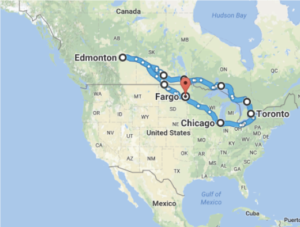
My son [who was our fearless navigator] and I enjoyed our time heading home without her, then spending the last few days making our selves at home without her.
We undertook a teardrop shaped loop – check it out on the map. When I look at it this way, it was quite a trip – quite stunning. (As we did this, I kept thinking of the sheer determination that colonial and Canadian/colonial governments had to pursue the residential school system before cars. Wow. This is a vast land.)
I had the opportunity to visit cities I have heard of all my life, small and large, and see where they are situated. We circumnavigated four of the great lakes, touched all five. Slept under the stars. Watched a couple of baseball games, saw a great Broadway show, visited with some distant family. Noted the places of expanse of the residential school system in Canada (it was done with great determination to cover this great amount of land). Had wonderful chitchats and snuggles in the tent.
As I head to new cities in Europe again later this month, on another continent, I will go with the spirit of the intrepid explorer, an unusual tourist. As a quester in the wilderness on this Planet of Cities.
The cities along our route, were a veritable constellation of large and small settlements, that we came in contact with. Here’s the list!!!! that we [stamped in our mental passport] along the way:
This blog series continues a celebration of the launch of Book 2 in the Integral City Book Series: Integral City Inquiry & Action: Designing Impact for the Human Hive.
In this blog series, Guest Bloggers from the Integral City Community of Practice explore how each is living the practices of Placecaring & Placemaking.
The series includes:
Integral City Community Practise Placecaring and Placemaking
An Intuitive Walk Through Amsterdam
How is Your City Your Habitat?
Post Script: Sorting into Birth Order as Right Place
Post Script: Sorting into Birth Order as Right Place
Guest blogger: Anne-Marie Voorhoeve
Remembering when Diana Claire visited the Netherlands last year she stayed with my mum (in the same village as me).

We were looking at a row of family photos. They sorted by the direction that people were looking in the portraits. Really all muddled up, in the sequence of their family order.
We did a little ceremony with my mother hanging all the photos in the right birth order. This added to the grounded energy and more calmness in our sense of Place. And created the condition for lovely touching conversations.
This blog series continues a celebration of the launch of Book 2 in the Integral City Book Series: Integral City Inquiry & Action: Designing Impact for the Human Hive.
In this blog series, Guest Bloggers from the Integral City Community of Practice explore how each is living the practices of Placecaring & Placemaking.
The series includes:
Integral City Community Practise Placecaring and Placemaking
An Intuitive Walk Through Amsterdam
How is Your City Your Habitat?
Post Script: Sorting into Birth Order as Right Place
Searching for our Right Place
Guest Blogger: Diana Claire Douglas
Basic teachings of Systemic Constellation Work include the “natural orders” of belonging, balance and rank, based on living system principles. These are called “Orders of Love” in family constellations. Finding and being in one’s right place comes when each of these orders are satisfied. And we do this starting with our family system.
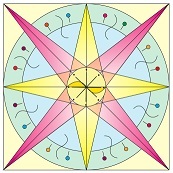
Belonging: are we securely attached to our parents or is there an interrupted movement with our mothers and then fathers? If the latter, there is a gap and we fill this gap often by making ourselves “bigger” than our parents, and therefore we are not in our right place.
Balance of give and take: parents give and children take. Children show they have been able to take from their parents (no matter how they parented) when they can give to their own children. If we reject, criticize, judge our parents, we have not been able to “take” them in and therefore we are rejecting Life as it has come to us. We are not in our place in the flow of Life. In adult relationships, there needs to be a balance in the flow of give and take between two people. (For me there is a difference between “receive” and “take.” We can receive something and still not take it in and embody it.)
Rank: who comes first, is first. Grandparents come before parents who come before children etc. First children come before second children. Miscarriages, still births, abortions also belong to the family system. Let’s say there are 1 miscarriage followed by 3 living children. The miscarriage is #1 and the living children follow as #2, #3, #4. If the miscarriage is not acknowledged, #2 will think she is #1 and not be in her right place.
When we are not in our right place within our families, Life does not flow smoothly and we will see the impact of this in how we are in our relationship with the world, work etc., etc. We may be always “searching for our place”.
Another way to look at Place!
This blog series continues a celebration of the launch of Book 2 in the Integral City Book Series: Integral City Inquiry & Action: Designing Impact for the Human Hive.
In this blog series, Guest Bloggers from the Integral City Community of Practice explore how each is living the practices of Placecaring & Placemaking.
The series includes:
Integral City Community Practise Placecaring and Placemaking
An Intuitive Walk Through Amsterdam
How is Your City Your Habitat?
Post Script: Sorting into Birth Order as Right Place
How is Your City Your Habitat?
Guest Blogger: Joan Arnott
Beth Sander’s quote on her website initially got me thinking about place quite awhile ago. Here is the quote –
‘Do you think of your city as your habitat?’
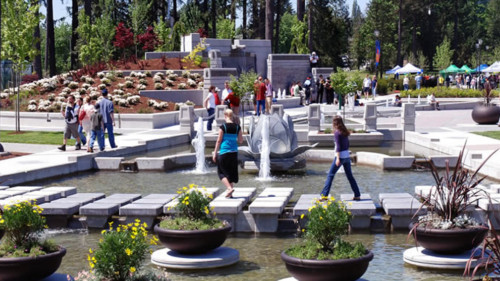
Then last September, I participated in a webinar where Marilyn was introducing Integral City to Integral Without Borders. I wrote this note to Marilyn –
The piece I took away from the session and I am still paying attention to is about the City of Surrey, BC, Canada, where I live. Telling my story about early years living in Surrey was quite revealing. It was a time when I loved where I lived and felt very fortunate and connected. I realized that now, years later, I feel quite disconnected from North Surrey, like a gap in between South Surrey. I also I noticed the sadness I feel when I see the agricultural land and huge tracks of treed areas being so rapidly replaced by dense condos and townhouses etc. Some of the trees are large and quite old, like old friends to me. Occasionally, I have a good cry when I see how thoughtlessly the trees have been cut down and discarded. I will continue to work the energy with the Spirit of the City and pay attention to filling out my wholehearted relationship with place and all of Surrey. Good one Marilyn! How can I truly be part of our core team without having the holy ness of living in my residing city :- ) When people ask me where I live, I want to respond lovingly in a way that includes both the light and the underbelly of my city.
Since then I have been paying attention to my local area and writing notes about my living place, our neighbourhood and my relationship with the city where I live. It’s a new relationship! Here are some of the ways I am changing my relationships.
In the last ten years, our neighbourhood population has morphed from a cultural mix of people into one of about 85 % Asian people, many of whom speak very limited English. The cul-de-sac in which I live has seven homes and all are occupied by Asian folks who have moved here from China or Korea in the last 1 – 5 years. I was beginning to feel isolated. I decided to intentionally practice casually getting to know more about the people who live in and around my neighbourhood and this is proving fruitful. The response is encouraging. My sense of place is growing.
Now when I go for a walk around my neighbourhood or in our local urban forest, I purposefully say hello to all and practice engaging in conversation as opportunity arises or I just simply wave and smile. Gradually, I am able to connect people and faces to their homes. Before there was just houses and driveways and enclosed garages.
I am also more aware of how much the newer arrivals spend time caring for their homes and surrounding yards. They tell me they are grateful for the clear air and especially that their children can play outside.
My next-door neighbour, Kathy, haltingly told me a story about the city in China where she was born and still has a home. It has been known as a city for over 2700 years. I was imagining a little child’s feet first connecting with the earth in a city that is that old. Imagine the energy vibration of that! wow! How might that shape a sense of place and early connectedness?
Yesterday I met a man called Michael and his little 3 year old daughter Annabelle. I suggested that his placard saying ‘children playing’ could be moved closer to the edge of his property so it could be better seen by cars coming around the corner. He liked that. I was glad about that too. Little things matter to me, especially things that help keep children safe.
I am enjoying the growing relationship with my neighbourhood and the City of Surrey. I am more aware of how my voice sounds when I respond to people asking me where I live. My sense of place is getting more rooted.
This blog series continues a celebration of the launch of Book 2 in the Integral City Book Series: Integral City Inquiry & Action: Designing Impact for the Human Hive.
In this blog series, Guest Bloggers from the Integral City Community of Practice explore how each is living the practices of Placecaring & Placemaking.
The series includes:
Integral City Community Practise Placecaring and Placemaking
An Intuitive Walk Through Amsterdam
How is Your City Your Habitat?
Post Script: Sorting into Birth Order as Right Place
Finding the Right Place
Guest Blogger: Alia Aurami
I loved Cherie’s and [Anonymous] idea of the intuitive city walks, and that could be a great practice!
The inquiry into “place” brings up two resonances in me. One is that I think each of us has “our right place” on the surface of Gaia, at a given time, and if we are there, we are the happiest it is possible to be. There could be many REASONS that [a location] is our current “right place,” most of which I think are multi-dimensional and have little to do with our personality’s preferences, but those preferences are certainly not unimportant to whatever it is that “knows” or “decides” our right place.
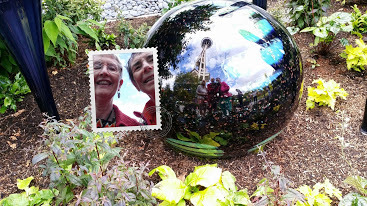
Some people inquire and search to find their right place; it is well worth shaking up one’s life to move there if one is not there. Any other place leads to a less than optimal wellbeing. (I think I am in preparation mode to make such a move.)
Other people already know their right place, because they’ve been there or they just feel the attraction/desire to move there.
The other resonance is my own internal inquiry into what is “home place” for me, not having had a regular dwelling that is “mine” for awhile. At first, I felt at home in my car whom I love very much; she’s an angel. Also I felt and affirmed “Gaia is my home, so I am always at home.” Especially, it felt as if looking at trees and being around trees, evoked the sense of “home.”
Those were two ways I felt a sense of place. Also, I connected with the places where people welcomed me, cared about me, wanted me with them; those were “my place” when I sometimes felt “displaced.” And perhaps more abstractly to say, but deep within my body and soul, I felt “I am at home wherever there is loving kindness.”
And finally, I created a sense of “my place” by always having with me in my various temporary homes, many of the objects of ordinary life that had been in my previous homes: my own dish and glass, my own bedding, my own clock, etc. Not to mention my daily home of my computer, haha.
So those are some of my own explorations around “place” that allow me to resonate with your explorations and connections, Cherie, Anonymous and others.
Oh, a humorous memory pops up. A friend I used to travel with to new places, in the U.S., we’d always go into the local drugstore, and wander around/explore there. It gave us a real sense of connecting with the local place; that was our quirky way. Of course, nowadays they’re all chain stores and not so locally unique and interesting!
This blog series continues a celebration of the launch of Book 2 in the Integral City Book Series: Integral City Inquiry & Action: Designing Impact for the Human Hive.
In this blog series, Guest Bloggers from the Integral City Community of Practice explore how each is living the practices of Placecaring & Placemaking.
The series includes:
Integral City Community Practise Placecaring and Placemaking
An Intuitive Walk Through Amsterdam
How is Your City Your Habitat?
Post Script: Sorting into Birth Order as Right Place
Relationship to Place
Guest Blogger: Cherie Beck
Wow. Thanks [Anonymous]. Your writing and inquiry has been calling to me … As you express “place” as the city, the city expresses itself (through me) as “place” via an impulse of human will to which I respond with Yes.

What comes up in me, as we notice and acknowledge the city, the city notices and acknowledges us. The concept of relationship steps forward as an important aspect of developing as city-zens. Our relationship with place is as fundamental as relationship with mothers and fathers, husbands and wives, friends and foes. Like all relationship is integral with the self and in this moment, my understanding and awareness of the concept of “integral” expands.
What a gift. Thank you.
Secondarily, I acknowledge that notion and identification of location is critical. We have maps, symbols, language, resources which help locate ourselves IN the city, and a few for locations ON and AS the city (obviously Integral City frameworks point in this direction).
Lastly, I notice the tagging of conscious business as one of the primary spaces of Ellen’s Lifemap technology. What I am most curious about is the re-engineering of society where such vocation is lived consciously as work/contribution to the I/We/It of the human hive, where business is only one possibility, one structure. Where “jobs” are created, expressed and returned in terms of functions, needs/desires and location of our relationship with place.
This blog series continues a celebration of the launch of Book 2 in the Integral City Book Series: Integral City Inquiry & Action: Designing Impact for the Human Hive.
In this blog series, Guest Bloggers from the Integral City Community of Practice explore how each is living the practices of Placecaring & Placemaking.
The series includes:
Integral City Community Practise Placecaring and Placemaking
An Intuitive Walk Through Amsterdam
How is Your City Your Habitat?
Post Script: Sorting into Birth Order as Right Place
An Intuitive Walk through Amsterdam
Guest Blogger: Anonymous
Setting the scene
I have taken a short holiday from my home in the country near Utrecht to stay in Amsterdam for a few days. Here are extracts from my journal of several of my experiences during that stay to intimately connect to Place.
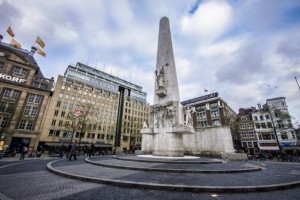
The night before. Many people per square meter. Nice facades. Very old pipes bring the water into and from the houses. In bed, I immediately could find a connection to the earth. I was surprised; I did not expect that.
In the morning. I went out to get breakfast somewhere. The restaurant next to the Van Gogh museum looked inviting. It was almost empty, with a lot of glass, and the sun was shining through. Soon, I am enjoying a French breakfast. I am pondering… In the center, it is much about the business of tourism. Organized and offered in a professional and good-humoured way. I feel an observer. The sky is blue with white clouds, but looks like it is ‘at another level’, not part of this man-made environment. There is a lot of intelligence in this place.
The waiter, who has brought me my breakfast, asks me what I am writing about. I tell him, that I am on a walk through the city, observing and sensing, finding every next step intuitively. That this is an experiment in my inquiry into the meaning of ‘place’. That I have been inspired by what Cherie Beck, in our Integral City group, is doing in/for Washington DC. That I want to walk towards the Dam and the monument -an obelisk -to find out what I am sensing on that spot. …
I decide to go to the Dam and find a church nearby as well. It is quiet for a Saturday in the summer season. While I am walking I come into contact with the memory of the systemic constellation Marilyn and Diana Claire did in Amsterdam (in 2013). I saw the face of Tatiana Glad of the Impact Hub Amsterdam. It is a short flashback. I get the feeling, that this constellation wants to be continued.
I am walking and encountering women who are observers, like me. Also, here in the center of the city, it is easy to connect to the earth. Since I started walking my heart is ticking louder than before. I arrive at the Dam. The Hare Krishna monks are putting up stalls for the Festival of Chariots. My tour around the monument does not give me any special sensation. I sense some energy between chakra 2 and 5.
I decide to go to the Nieuwe Kerk first, at 100 meters from the monument. It is a famous church. I sense and feel proudness of everything that has been accomplished here. Originality is the word that comes up. An organ recital there will start in half an hour.
In the church, I take off my shoes (with rubber soles) to feel the earth. First some internal heat needs to go. So, I let it go. I affirm that I do not want this experience to be about me as an individual, not about my personality. I affirm who I am. My borders are clear and as wide as I would like. My mission is clear. I know I am able to sense the difference between something about me and other sensations.
Heavenly music is a text that hangs on a board in front of the very big and beautiful organ. I see and feel an enormous white angel, that encompasses the church. In fact (in hindsight) her belly is this church. The connection with the earth in the church does not feel as strong as elsewhere. I can sense, that this is a place of spirituality. Again, my heart is ticking louder than normal. I get a feel of myself standing with both feet on the earth and with my upper body in the skies. Tears come into my eyes. THIS IS MY PLACE. Place in another sense, than used before -more a position. I am clearly on an inquiry into PLACE.
I get the idea, that the waiter (who paid for my breakfast) could earn money by organizing group walks like I am doing now. I will send him an email with this idea. I can see how this could be an emerging practice of Integral City work, too. The words that come with it, meant for me as a person, are: you have to do the work yourself. The emphasis is on work. Could this emerging practice become a way in which people can find their place? I am now feeling my chakras’ 5, 6 and 7. So I sensed the lower chakras at the monument and the higher chakras in the church. And in both places, my heart beat louder. Does the word ‘yourself’ mean that this is my work because of the fact that my heart is open? This is something that comes up while I am typing this in on my iPad from the notes on paper.
I am following the different rhythms and sound of the organ music. For myself I voice the affirmation that I may be healed/cured in this place.
Today, the sun comes through the clouds and my eyes fall on the text on the wall: rejoice. What does the earth say at this moment? I love you. Yes, I know……. But: besides the obvious…. I am receiving (conceiving?) you. Now I can feel the lower part of my body.
After the concert has finished I go to the monument again, but do not get additional information. About a kilometer away, on the route to my weekend address, I eat noodles with vegetables in a Chinese take-away. A little further on I am passing a little photographer’s shop with an old lady in it. I decide to ask her to make new photos for my passport. She helps me relax -I am not good at posing. When I am paying for the photos we have a little conversation about people helping each other.
My last location on the way back is the Kiloshop, which sells second hand clothing from the seventies and eighties. My niece worked there, but not anymore, so I found, when I arrived there. By that time, I was beginning to feel tired. I had been on the road for 5 hours. I decided to just walk from here, and relax. I bought some carrot cake in a social enterprise called My Aunt’s Cakes. …
The following day I just wanted to relax. When I was walking towards the Amsterdam Forest, a large park, I felt it would be a good idea to realign with the people. Though I had had a lot of contact with people, the day before, this was when I was walking as an observer and as a representative of [some energy in the systemic constellation related to Amsterdam’s future that wants to continue]?
The Master Code, is what I feel, while writing this down. Today I was walking as me. I felt myself go from small to big and vice versa – in the area of life where everybody is compared with each other, constantly. I saw “others” as many very rich people and many big big cars. I felt myself becoming very critical and felt how a lot in this world was wrong. At the same time, I saw many innovative initiatives and ‘small’ people doing great things for the world. My thoughts and emotions went from the one to the other extreme [of the Master Code].
I went back, packed my things and got the tram to the station. When I was waiting for the train to take me home, this process came to an equilibrium, when I realized that It was necessary for me to accept everything as it is, including myself. That it was not necessary for me to let myself drift on these tendencies to judge.
There was another insight. I have always wanted to have an overview. I have profited a lot from my capacity to have a helicopter-view. But it is just impossible to have an overview of the world, even of a part of this city, or a group of people, even of somebody else’s life [all those aspects of the Master Code].
I felt a sensation of deep peace coming up in me as I realized that what is effective for me now is to be fully present in the moment, to be with what is, and trust that this is enough and that this is exactly the right place to be and do my work, that my work, here and now, will exactly be the right work for me. In fact, I am now considering myself someone who does regular inquiries about place/Place/PLACE.
This blog series continues a celebration of the launch of Book 2 in the Integral City Book Series: Integral City Inquiry & Action: Designing Impact for the Human Hive.
In this blog series, Guest Bloggers from the Integral City Community of Practice explore how each is living the practices of Placecaring & Placemaking.
The series includes:
Integral City Community Practise Placecaring and Placemaking
An Intuitive Walk Through Amsterdam
How is Your City Your Habitat?
Post Script: Sorting into Birth Order as Right Place
Finding Bearings about Place
Guest Blogger: Ellen van Dongen
I feel that I can find my bearings concerning ‘place’, now. It is connected to my Lifemaps work and Integral City.
Place is part of Integral City’s Master Code. I am deeply touched and humbled by the importance and generative power of the Master Code. For me it is a beautiful expression for living a life in Oneness.

You could say, that the whole of the Lifemaps.NL framework of posters and stickers is my Lifemaps Book 1 (like the Integral City Book 1). You can choose many overlays, paths or processes to work with Lifemaps. The 4 core lifemaps are compasses for the 4 core themes: being your true self, following your life’s purpose, living your life as a personal creator and being a conscious entrepreneur. They are developed from and for the individual perspective (I, IT – subtle as well as material). The collective aspects I want to work with in groups, to complement these lifemaps, are: WEconomy + New Business Models, and place making, place caring + the Master Code.
What is the Connection to my Work?
Integral City for me first came with inspiration: being with Marilyn, listening to the story of the bees and the human hive and the four voices. I could recognize it as an important integral framework for assessment and mapping as well. From that time on I have felt, that Integral City had a place in my life. Over the last few years I always enjoyed our monthly community of practice zoom calls. I was/am curious about the source/sources and the underlying process in our systemic constellations. I see the potential of our space-holding work. I really feel involved and included. What I did not have yet was a direct point of connection into me and my work. This came last July, when I was finalizing the four big lifemaps: Being yourself, Following your mission, Living as a personal creator and Conscious business. Note: you can have a peek at Lifemaps.nl to get an impression of how these lifemaps look.
Discovering place
I was developing a set of icons which could represent key aspects and principles of creation. For me Life = creation & evolution. Everyone of us is a creator. We all co-create with one another and with Life. In my experience one of these aspects is: knowing where you are. Related to creation, this means, that when you know where you are – and you are completely there (present, but also present on that spot), in the now – your creations will have strong roots and will flourish. The symbol for this is:
After having developed the set of symbols, and after having developed the lifemap Living as a personal creator, my last test and validation was: working with this lifemap myself -going through the whole experience and finding out whether everything I needed in my process as well as in the content was provided for. So, I was choosing stickers and laying out my life’s journey on the poster. I was reflecting about what my creations could show me about my function as a personal creator. The last step in this lifemap is to look at the set of creation icons to assess where and which principles and aspects I had experienced in my life. And there was the icon meaning: knowing where you are. At that moment I saw, that this was about place, I and that I had been wondering about this for a long time.
Place connects my work with lifemaps to Integral City and vice versa
With this I have found what connects me and my work to Integral City. To follow my intuition, inquire about/into place, find the meaning of place… Find and answer questions like:
do we have an in-built GPS and if so why and how?
What is the connection to the four directions: N, E, S, W?
What is the energy signature of a place and what is the meaning of it?
What is a source and what is the relationship between place and source?
What are places of power?
I therefore find it really great, that the lifemaps have shown me this connection. To complete the fun…. there is also a connection between the lifemaps and Integral City now, to be implemented. The four lifemaps do not explicitly include place, yet. So, I will see to it, that it will be embedded in them, in the near future.
I want my work to be about finding new integral, sustainable and conscious ways to be yourself, to live and work together. I personally will work with the lifemaps from the “I” perspective (coaches are using them for group work within organizations). And I will work with New Business Models and Integral City to cover the “WE”. The circle is round for me now, as we say it in Dutch.
This blog series continues a celebration of the launch of Book 2 in the Integral City Book Series: Integral City Inquiry & Action: Designing Impact for the Human Hive.
In this blog series, Guest Bloggers from the Integral City Community of Practice explore how each is living the practices of Placecaring & Placemaking.
The series includes:
Integral City Community Practise Placecaring and Placemaking
An Intuitive Walk Through Amsterdam
How is Your City Your Habitat?
Post Script: Sorting into Birth Order as Right Place
Marilyn Hamilton's Blog
- Marilyn Hamilton's profile
- 3 followers


